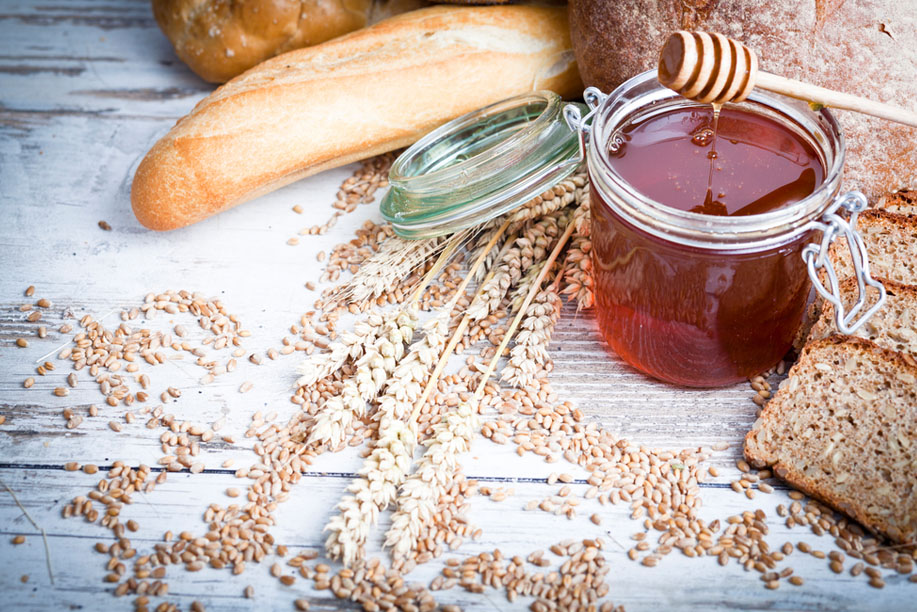Curious about how to substitute honey for sugar in baking? Or about the benefits honey offers in the areas of taste, texture, and freshness?
Honey has been used as a sweet substitute for sugar for as long as bakers have been putting dough in the oven, and today a growing number of amateur and professional chefs are experimenting with honey in almost every baked good imaginable.
It’s not hard to see why. Honey adds a unique earthiness to baked goods that makes sugar seem bland in comparison. It also balances and enhances other flavors, and it gives bakers an opportunity to select a unique honey varietal that accentuates their specific flavor objectives.
Honey also does remarkable things for the texture of baked goods. Because honey is made up of the monosaccharides glucose and fructose – rather than the disaccharide sucrose found in white sugar – it browns faster and yields a golden crust. It also adds moisture to soft-textured baked goods liked breads and cake.
Honey’s natural ability to hang on to moisture also keeps baked goods fresh longer. And its high acidity helps to increase the shelf life of baked goods even further by inhibiting mold growth.
How to Bake With Honey
If you’re ready to experiment with honey as a substitute for sugar in your next baking project, here are a couple of tips that will help you get the best result.
Choose the Right Varietal
Different types of honey can add distinctive flavors to your baked goods, ranging from the citrusy notes of an orange blossom honey to the rich flavors of a darker honey like Don Amusan. For a straightforward sweetness closer to sugar, start with a mild, light option like a traditional clover honey.
Use Less Honey Than Sugar
Remember that honey is sweeter than sugar, so you’ll want to use less of it. The rule of thumb is 1/2 to 2/3 of a cup of honey for each cup of sugar in the original recipe, depending on your desired level of sweetness and the type of honey your using.
Adjust Your Other Liquids
Because honey naturally contains moisture, you’ll need to reduce your total liquids by using less of something else. Aim to decrease other liquids by about 1/4 cup for each cup of honey. If there aren’t other liquids to remove, try adding two tablespoons of extra flour for each cup of honey.
Watch the Temperature
We mentioned above that the glucose and fructose in honey will help your baked goods achieve a rich, golden crust. That also increases the risk of burning, however, so try reducing the oven temperature by 25 degrees and keep a close eye on your progress.
Add Baking Soda
Honey is naturally acidic, which can prevent a baked good from rising properly. To counteract this, add 1/4 to 1/2 teaspoon of baking soda for each cup of honey. If the recipe already includes baking soda, just add a pinch or two extra.
Interested in more ideas for cooking with honey? Visit the recipes section of this site.

